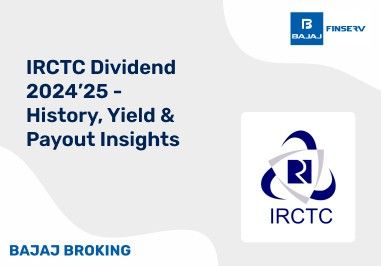BAJAJ BROKING
Tankup Engineers IPO is Open!
Open a Free Demat Account
Trade Now, Pay Later with up to 4x
Track Market Movers Instantly
What Are Hybrid Mutual Funds?
Mutual funds represent investment pools where multiple investors contribute funds that are then managed by professionals. Hybrid mutual funds, often called balanced funds, blend various asset classes within a single portfolio. These funds strategically combine stocks and bonds, aiming to diversify while managing risk. Their allocation between stocks and bonds varies based on the fund's objectives; some prioritize growth with more stocks, while others focus on stability with a higher bond allocation.
Different types of hybrid funds cater to various risk appetites: conservative funds lean towards bonds for stability, moderate ones balance growth and income, and aggressive ones favour stocks for potential gains. Target date funds adjust their asset allocation over time, becoming more conservative as the target date, such as retirement, approaches. Investors are drawn to hybrid funds for their diversified nature and the ability to access both equity and debt markets within a single investment, offering a balanced approach for those seeking growth potential while managing risk.
Should Investors Invest In Hybrid Mutual Funds?
Investing in hybrid mutual funds offers several advantages for investors. Here are a few reasons why they might consider these funds:
- Diversification: Hybrid funds diversify across stocks, bonds, and other assets, lessening the impact of market volatility. This mix cushions against market fluctuations.
- Risk Control: These funds balance risk and return by blending diverse assets. Ideal for moderate risk seekers seeking growth potential.
- Professional Management & Convenience: Investors gain from expert fund managers, eliminating the need for personal investment research or management. It's convenient, especially for those lacking time or expertise for active investment handling.
- Growth and Income Potential: Hybrid funds, based on their allocation, offer growth via stocks and income from bonds, balancing wealth accumulation strategies.
- Options and Tailoring: Hybrid funds come in diverse types, addressing specific risk levels. Investors can choose per their risk tolerance and goals, whether for growth, income, or a balanced approach.
- Certain hybrids, like target date funds, adjust allocations. This flexibility benefits long-term objectives like retirement, gradually shifting to a more conservative stance as the target date nears.
- Adaptability to Market Changes: Hybrid funds adjust to market shifts. During growth phases, stocks benefit, while in uncertain times, bonds offer stability and income.
- Balanced Returns: These funds seek equilibrium between risk and gains. Ideal for those seeking moderate risk, hybrid funds aim for optimized returns based on the risk taken.
- Accessible Investment: Certain hybrids require lower minimum investments than individual options like stocks or bonds. This accessibility enables portfolio diversification without requiring significant capital.
- Portfolio Realignment: Managers routinely realign hybrid funds, selling overrepresented assets and buying underrepresented ones to uphold the intended allocation, ensuring alignment with fund goals.
Investors opt for hybrid mutual funds due to their diversified, professionally managed nature, suiting individual risk tolerance and financial aims.
To Choose The Best Hybrid Mutual Funds
Selecting top hybrid mutual funds requires understanding your financial objectives, and risk tolerance, and conducting comprehensive research. Here's a guide:
- Outline Investment Goals and Risk Tolerance: Identify whether you seek growth, income, or a balanced approach. Assess your risk capacity to select funds in line with your comfort amid market shifts.
- Research Fund Categories: Understand the different types of hybrid funds available (conservative, moderate, aggressive, target date, etc.). Each category has specific objectives and risk profiles. Choose the category that best matches your investment goals.
- Review Past Performance: Scrutinize the historical track record of funds in your selected category. Prioritize consistency across market cycles rather than short-term spikes. Compare fund returns against benchmarks and similar funds for insight.
- Analyze Cost Factors: Examine the expense ratio—annual operating costs relative to net assets. Lower ratios typically yield better investor returns. Additionally, be mindful of any extra fees or loads linked to the fund.
- Review Fund Manager and Strategy: Research the fund manager's experience, investment philosophy, and strategy. A skilled and experienced manager who aligns with your investment approach is crucial for the fund's success.
- Examine Asset Distribution and Holdings: Grasp the fund's allocation among stocks, bonds, and other assets. Evaluate top holdings to verify their alignment with your preferences and the fund's goals.
- Check Consistency and Stability: Look for funds that have shown consistent performance and stable management. Avoid funds with frequent manager changes or erratic performance.
- Study Fund Papers and Ratings: Examine the fund's prospectus, fact sheets, and ratings from independent sources like Morningstar. These references offer crucial details about the fund's strategy, risks, and past performance.
- Consider Professional Advice: If unsure, consult a financial advisor. Their tailored guidance, considering your financial status and goals, can offer significant benefits.
- Track and Review: After investing, consistently assess your fund's performance to ensure it aligns with your objectives. Adjust your strategy as needed due to changing market conditions.
Conclusion
Hybrid mutual funds provide a diversified investing strategy by mixing stocks, bonds, and, in certain cases, other assets in a single portfolio. These funds, tailored to different risk appetites, blend growth potential with risk management, appealing to investors looking for a happy medium. With professional management, they provide convenience, adaptability to market conditions, and the potential for both growth and income. Choosing the right fund involves assessing personal goals, and considering historical performance, fees, and fund managers. Ultimately, hybrid mutual funds serve as versatile vehicles, offering investors the opportunity to access multiple asset classes and navigate market fluctuations while aiming for a balanced and optimized investment strategy.
Disclaimer: Investments in the securities market are subject to market risk, read all related documents carefully before investing. This content is for educational purposes only.
Share this article:
Read More Blogs
Disclaimer :
The information on this website is provided on "AS IS" basis. Bajaj Broking (BFSL) does not warrant the accuracy of the information given herein, either expressly or impliedly, for any particular purpose and expressly disclaims any warranties of merchantability or suitability for any particular purpose. While BFSL strives to ensure accuracy, it does not guarantee the completeness, reliability, or timeliness of the information. Users are advised to independently verify details and stay updated with any changes.
The information provided on this website is for general informational purposes only and is subject to change without prior notice. BFSL shall not be responsible for any consequences arising from reliance on the information provided herein and shall not be held responsible for all or any actions that may subsequently result in any loss, damage and or liability. Interest rates, fees, and charges etc., are revised from time to time, for the latest details please refer to our Pricing page.
Neither the information, nor any opinion contained in this website constitutes a solicitation or offer by BFSL or its affiliates to buy or sell any securities, futures, options or other financial instruments or provide any investment advice or service.
BFSL is acting as distributor for non-broking products/ services such as IPO, Mutual Fund, Insurance, PMS, and NPS. These are not Exchange Traded Products. For more details on risk factors, terms and conditions please read the sales brochure carefully before investing.
Investments in the securities market are subject to market risk, read all related documents carefully before investing. This content is for educational purposes only. Securities quoted are exemplary and not recommendatory.
For more disclaimer, check here : https://www.bajajbroking.in/disclaimer
Our Secure Trading Platforms
Level up your stock market experience: Download the Bajaj Broking App for effortless investing and trading













